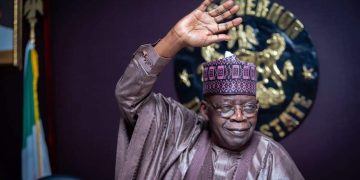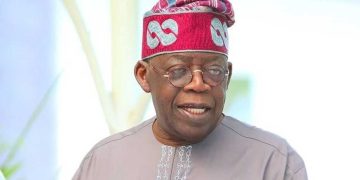The graveyard of failed streaming platforms in Nigeria reads like a cautionary tale written in billion-naira losses. By 2023, iROKOtv exited Nigeria completely, having stopped processing Naira payments, marking the end of what was once hailed as the “Netflix of Africa.” Despite raising over $30 million in venture capital and burning through an estimated $100 million in total investment, the platform that pioneered African video-on-demand couldn’t crack the code of sustainable streaming in Nigeria.
The question isn’t whether Nigerians love entertainment—Nollywood is the world’s second-largest film industry by volume, and streaming activities on Netflix, YouTube and other platforms increased internet spending by 34.26 percent to N2.81 trillion in 2024. The issue is more fundamental: Nigeria’s streaming entrepreneurs are building castles on quicksand, ignoring the structural realities that make their business models unsustainable.
The Subscription Delusion
The first critical misunderstanding plaguing streaming platforms is the assumption that Nigerians will readily adopt paid subscription models. This isn’t cultural resistance—it’s economic pragmatism. When Netflix announced its third subscription price increase in Nigeria since 2024, with premium plans now costing ₦8,500 monthly, many subscribers were forced to reconsider whether entertainment justified such expense in an economy where minimum wage hovers around ₦70,000.
The real winner in Nigeria’s digital entertainment space isn’t Netflix or the defunct IrokoTV—it’s YouTube. The platform thrives because it understands the fundamental principle that works in Nigeria’s economic reality: free content funded by advertising. When viewers don’t pay directly, and advertisers foot the bill, consumption soars without the friction of subscription fatigue.
This model isn’t theoretical—it’s proven. High data costs severely limit the addressable market for streaming services, making free, ad-supported platforms the only viable path to mass adoption. Yet platform after platform launches with subscription-first models, burning through investor capital while learning this lesson the expensive way.
The Data Fortress
Even more critical than subscription resistance is the data cost barrier that streaming platforms consistently underestimate. For a population that largely relies on pay-as-you-go mobile data plans, streaming video is a luxury many cannot afford. When a single Netflix movie can consume 3GB of data—equivalent to ₦1,500 worth of data bundles—the platform’s ₦2,500 mobile plan suddenly doesn’t look affordable.
The solution isn’t rocket science, but it requires strategic partnerships most platforms avoid. MTN Nigeria has already demonstrated the blueprint with social bundles, offering access to social media apps for as low as N25 daily, N50 weekly and N150 monthly. Streaming platforms need similar partnerships, bundling their services with discounted data packages that make consumption economically viable.
The telecommunications infrastructure already exists to support this model. Nigeria has five major fiber optic undersea cable systems—MainOne, Glo-1, ACE, SAT-3, and WACS—operating at less than 5% capacity. Companies like MTN, which is reportedly preparing to launch enhanced data bundle strategies, understand that content partnerships can drive data consumption and create sustainable revenue streams for both telecom providers and content platforms.
The Power Problem
No discussion of streaming sustainability in Nigeria can ignore the elephant in the room: electricity. While data costs create economic barriers, power instability creates usage barriers that make subscription renewals nearly impossible to justify. When subscribers only have electricity for a few hours daily, the value proposition of paying monthly for unlimited access collapses.
Challenges such as limited infrastructure and unreliable power supply need to be addressed to fully unlock the market’s potential, according to market analysts. This isn’t a problem streaming platforms can solve alone, but it’s one they must factor into their business models. Platforms that ignore power realities—designing for always-on consumption in an intermittent-power environment—are essentially designing for failure.
Smart platforms would optimize for offline viewing, compression technologies, and download-during-power windows. They would partner with solar power companies, offer battery-powered viewing solutions, or bundle with generator maintenance services. Instead, most platforms replicate Western streaming models that assume 24/7 power availability.
The Content Abundance Trap
Nigeria’s streaming entrepreneurs often fall into what could be called the “content abundance trap”—believing that access to Nollywood’s vast library of content is sufficient for platform success. IrokoTV founder Jason Njoku called the company’s $100 million investment in Nigeria’s digital entertainment space a “costly mistake,” citing flawed assumptions about the market.
Content is necessary but not sufficient. Nigeria produces over 2,000 films annually, creating an abundance of local content that should theoretically support multiple streaming platforms. However, content acquisition costs, when combined with infrastructure challenges and subscription resistance, create an unsustainable cost structure that even deep-pocketed international players struggle with.
The platforms succeeding globally—YouTube, TikTok, Instagram—don’t pay for most of their content. Users create it, share it, and consume it within advertising-supported frameworks. Nigerian streaming platforms need to consider hybrid models that combine curated Nollywood content with user-generated content, reducing acquisition costs while increasing engagement.
The Telecommunications Solution
The most promising path forward lies in telecommunications integration. When telecoms companies launch streaming services, they solve multiple problems simultaneously: data bundling becomes internal cost management rather than external partnership negotiation; they have existing billing relationships with customers; and they can treat content as a value-added service rather than a standalone revenue source.
MTN’s reported preparation to launch enhanced streaming-data bundle combinations could reshape the competitive landscape. If successful, it would demonstrate that sustainable streaming in Nigeria requires telecommunications DNA, not just entertainment industry expertise.
International companies like Netflix and Amazon Prime Video face a fundamental disadvantage in this market: they can’t bundle data costs, partner meaningfully with power infrastructure providers, or treat streaming as a loss-leader for other services. Their global scale advantages become irrelevant when local infrastructure challenges dominate user experience.
The Innovation Imperative
New platforms like Kava are being launched by Nollywood heavyweights, suggesting that industry insiders haven’t given up on streaming potential. However, success will require innovation beyond content curation.
Future platforms need to embrace technological solutions that address Nigeria’s unique challenges: AI-powered compression that reduces data consumption; blockchain-based micropayment systems that eliminate subscription friction; solar-integrated viewing devices that address power challenges; and mesh networking that reduces reliance on centralized internet infrastructure.
The opportunity remains massive. Nigeria consumed a record 973,445 TB of data in 2024, demonstrating growing digital consumption despite infrastructure challenges. The market exists—it just requires business models that acknowledge and address local realities rather than importing solutions designed for different contexts.
Rethinking Success Metrics
Perhaps the most important shift needed is in how streaming success is measured in the Nigerian context. Platforms designed for Nigerian realities might never achieve the subscriber numbers or ARPU (Average Revenue Per User) metrics that work in developed markets. Instead, success might look like: massive user bases consuming ad-supported content; integration with telecommunications services that drive overall digital adoption; or hybrid models that combine streaming with e-commerce, education, or financial services.
The companies that will eventually crack Nigeria’s streaming code won’t be those that raise the most venture capital or acquire the most content. They’ll be those that most deeply understand the intersection of entertainment desire, economic reality, and infrastructure constraints that define the Nigerian digital landscape.
The streaming revolution in Nigeria isn’t failing because Nigerians don’t want digital entertainment. It’s failing because most platforms are solving the wrong problems. Until entrepreneurs address data costs, power challenges, and subscription resistance with the same intensity they apply to content acquisition, Nigeria’s streaming graveyard will continue growing, one well-funded failure at a time.

Seunmanuel Faleye is a brand and communications strategist. He is a covert writer and an overt creative head. He publishes Apple’s Bite International Magazine.


















